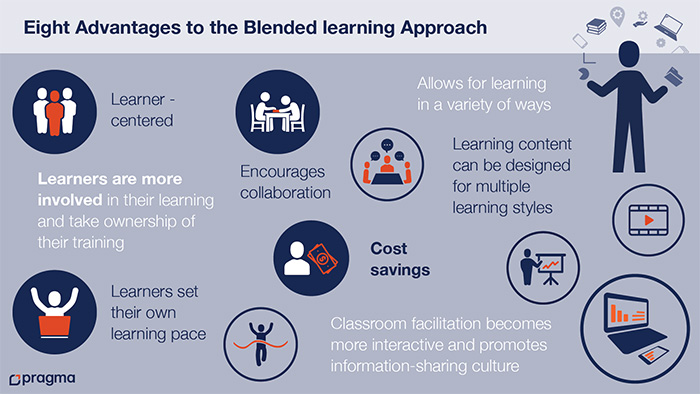 “Increasingly, organisations are recognising the importance of tailoring learning to the individual rather than applying a ‘one-size-fits-all’ approach.” (Thorne, 2003)
“Increasingly, organisations are recognising the importance of tailoring learning to the individual rather than applying a ‘one-size-fits-all’ approach.” (Thorne, 2003)
This is a comment we have all read or heard in some format and, appreciative of our individuality, it makes perfect sense! However, it doesn’t help to explain what has become an increasingly complex and evolving world of learning, or adequately describe the tools and technologies available to support different learning styles.
Developers of learning material need to be aware of delivery formats and platforms right from conceptualisation stage. Our end users, or learners, need to understand how to best benefit from different learning methodologies, platforms and technologies and why classroom learning still has its place in our fast-evolving digital environment.
In this series of articles, we’ll unpack why we are moving more and more to a blended learning delivery platform and further why we think it is a valuable approach for organisations to understand. We will also have our development team answer some important frequently asked questions, and finally look at the significance of micro learning in organisations.
Blended learning
Blended learning provides for a blend of online learning and classroom training. It enables the learner to access learning in different formats and then consolidate that learning in a classroom or even in the workplace.
A blend of learning resources and platforms create a self-directed approach where learners take an active role in their own learning allowing them to decide, within reason, the pace of their learning. They can, for example, decide how long they need to spend on an online module. Depending on the presentation format, the learner is also able to do some form of self-assessment: ‘What do I know and what I do I still need to find out?’
Online learning can consist of formal elearning courses, online reading material, videos, lectures, quizzes, games, animations, etc. It us dependent on the best way to deliver the content to ensure that learning can happen effectively.
As part of the blended learning approach, the classroom still has its place, but now evolves from an instruction-based approach to a discussion and facilitation approach focusing around practical examples and scenarios.
Space will also be created for learners to discuss what they have learnt and ask any questions they might have after working through the content independently.
Advantages of the blended learning approach
- Learner-centred
- Encourages collaboration
- Focuses on learning in a variety of ways, underpinning the rationale that we don’t just learn from one source and in one way, we learn through interacting with others and through a variety of channels
- Learners drive the learning themselves and can do it as quickly or as slowly as they need to retain the information
- Learners learn in different ways and the blended learning approach provides the flexibility for courses to be designed according to multiple learning styles
- A classroom no longer becomes an information dump, but more of an information sharing experience
- Slow and fast learners don’t feel bored because they can decide how and when to learn
- Costs come down because accommodation, facilitator fees, etc are reduced
- Learners get further involved in their learning and take more ownership of their training

Disadvantages of the blended learning approach
- Not everyone is strong with digital tools such as computers and smart phones
- Not everyone is familiar with web browsing, making navigation through the digital learning channel challenging. Setting up online contact sessions could also be problematic for those who do not sit behind a computer every day
- Data speeds are sometimes poor or unreliable making downloading or accessing of content difficult
- Discipline is required to complete digital content without supervision. This is mitigated through a training facilitator who regularly checks in with learners.
In the next of our three-part series, we’ll answer some frequently asked questions about blended learning and discuss why Pragma has selected a blended learning approach in some of their courses.
Please send any questions or comments you may have to the Pragma Academy: [email protected] and be sure to look out for part two of this series.
